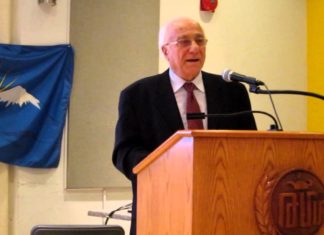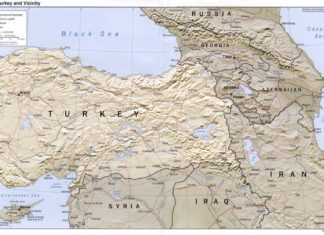By Edmond Y. Azadian
If modern Turkey is permitted to dream of — and design — a new Ottoman Empire extending all the way to Central Asia, and if the modern state of Israel is permitted to claim Eretz Israel (described in Genesis 15 and Exodus 23), why not allow Azerbaijan to dream of a plan for a “greater Azerbaijan,” covering almost the entirety of the Caucasus region? Only Armenians are forbidden from harboring such plans, apparently. As one extremist Turkish writer stated recently, “the dream of Greater Armenia will only remain a dream.”
Azerbaijan, which had never been a sovereign state before 1918, now has begun to concoct a history to justify its claims over its neighbors, since the collapse of the Soviet Union. However, with all its faults of being an “Evil Empire,” the Soviet system had imposed a forced brotherhood between constituent nationalities to forbid any interethnic conflicts. Now that the system no longer exists, the “brotherhood” has also evaporated, giving rise to conflicts and bloody clashes.
Since the Karabagh war, Azerbaijan has made outrageous claims against Armenia. The late Azeri president, Abulfaz Elchibey, was planning to occupy the entire territory of Armenia, to wash his feet in Sevan’s water and to drink tea on its shores. He also threatened to “liberate” Iranian Azerbaijan, or Northern Azerbaijan, and join it with the present Republic of Azerbaijan. Elchibey was perceived as a quixotic figure in the Caucasian politics and was dismissed as such.
But today, as the clouds begin to gather over Iran, Azeri leaders find a renewed chance of achieving those ambitious goals at the expense of a partitioned Iran, with the fallout extending over Armenia.
Indeed, until recently, President Ilham Aliyev’s bellicose rhetoric was directed against Karabagh. But, in a speech given recently to his armed forces, he indicated that Armenians had not existed in the Caucasus region and that they appeared in the area in the 18th century to be tolerated as they lived on Azeri lands. And this outlandish claim was made not withstanding Tigranes II’s empire, well before Christ, or Echmiadzin’s founding in 301 AD.









